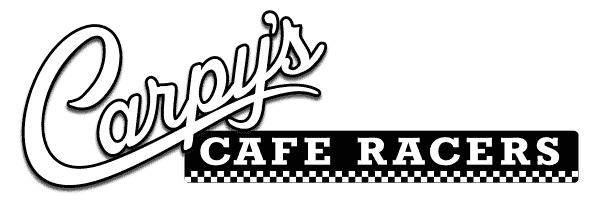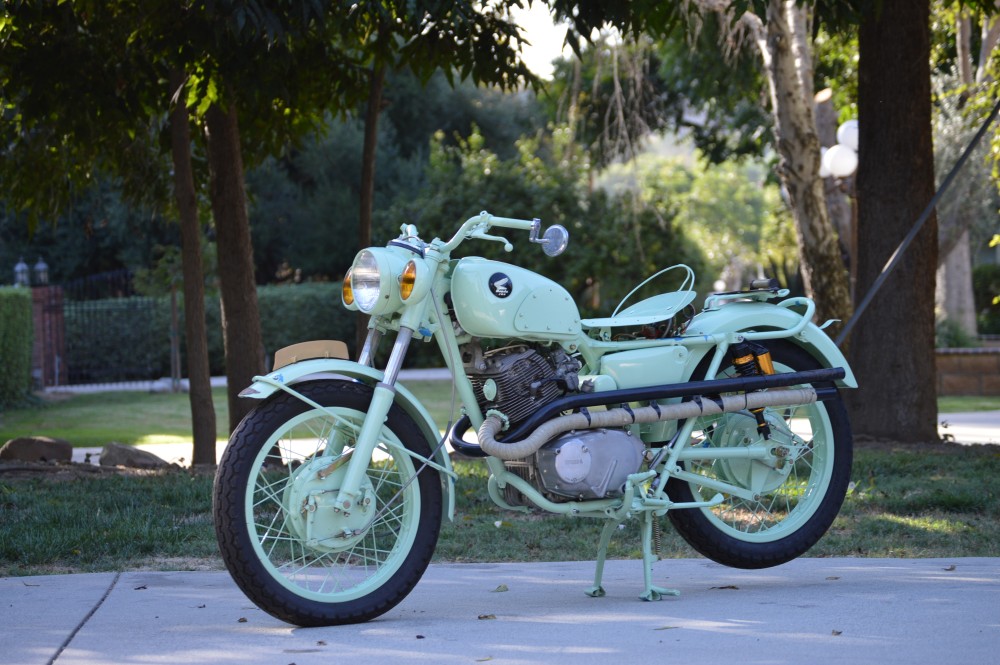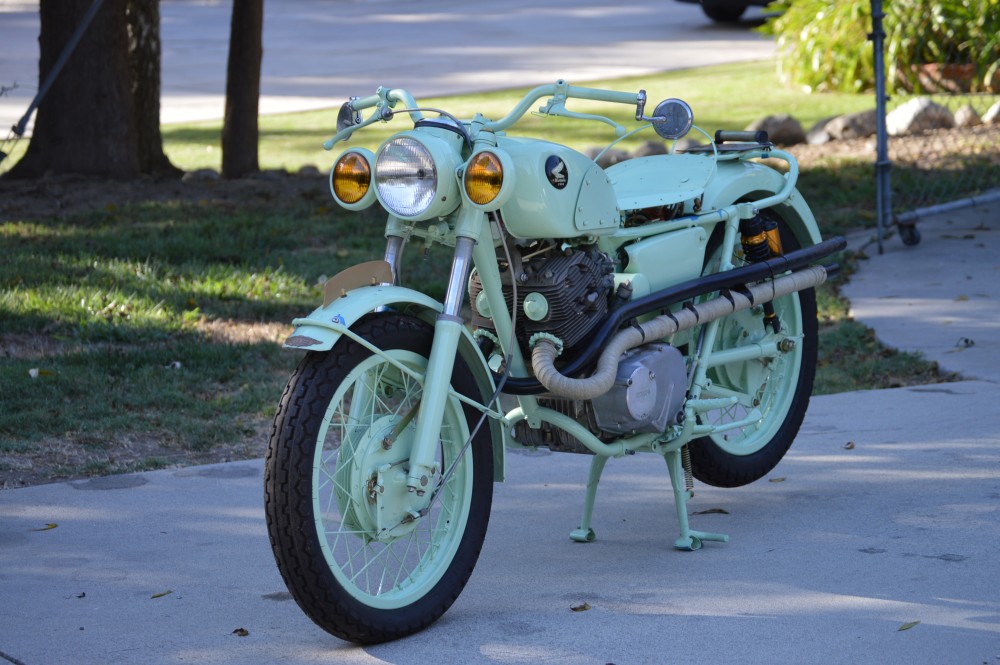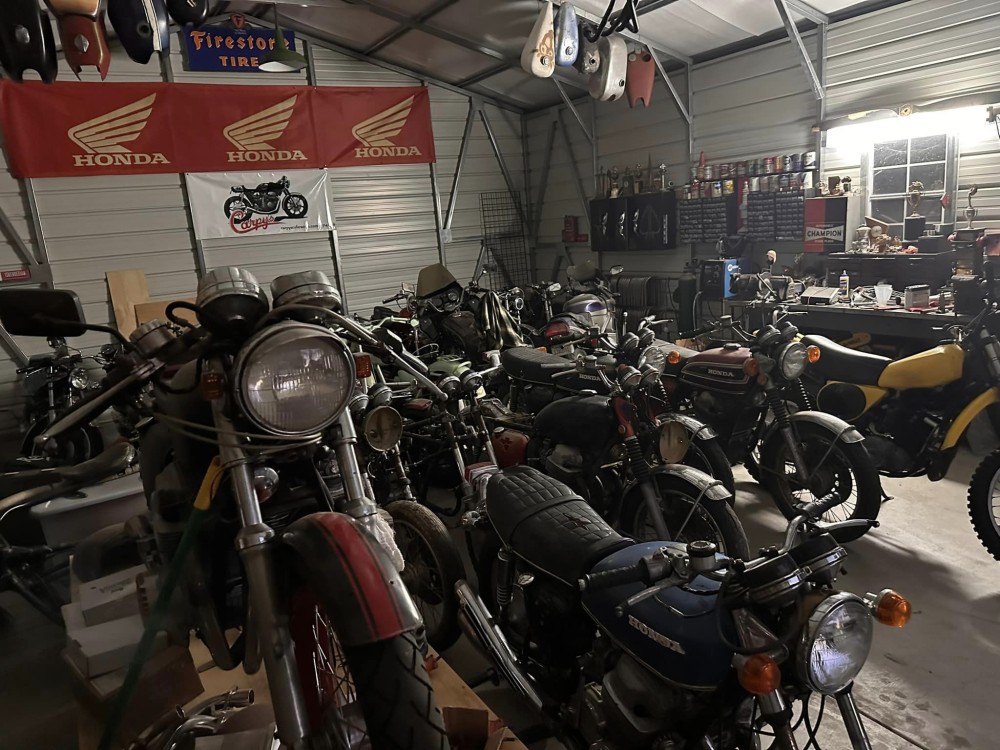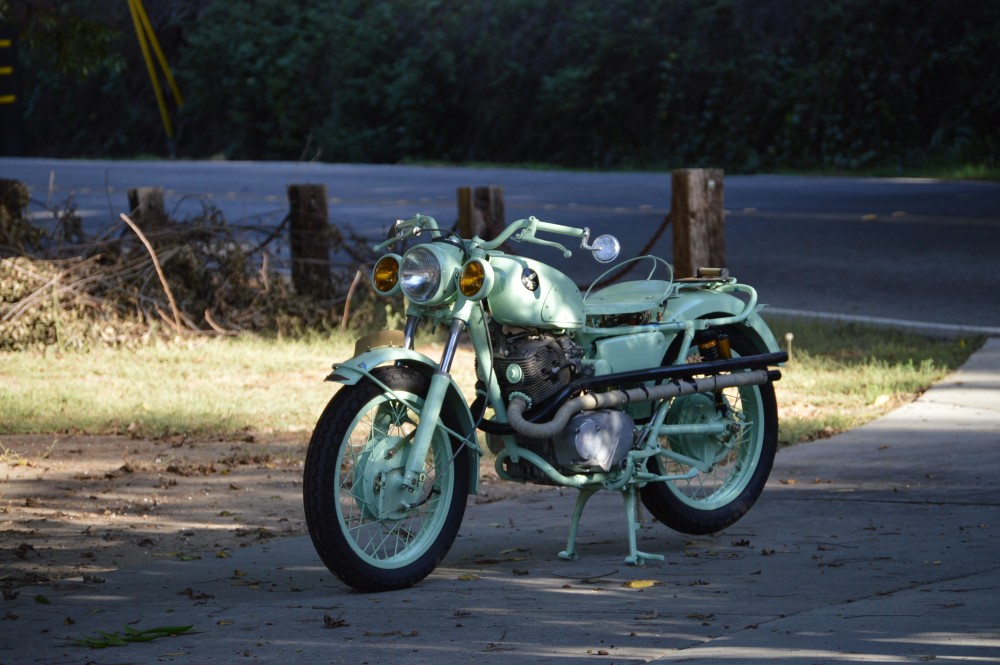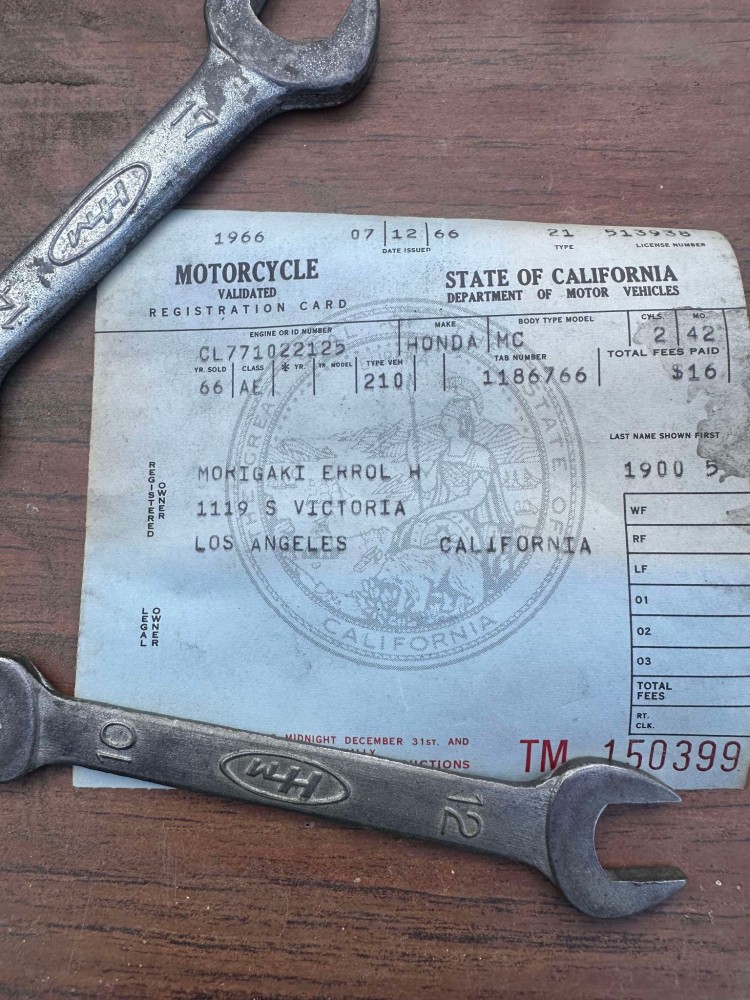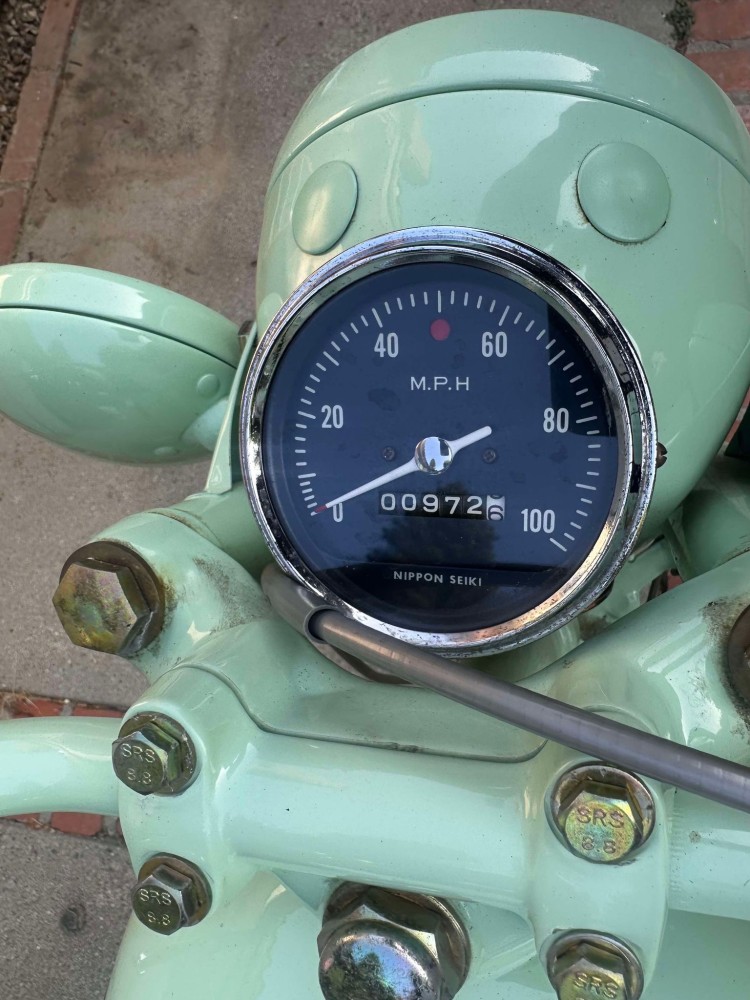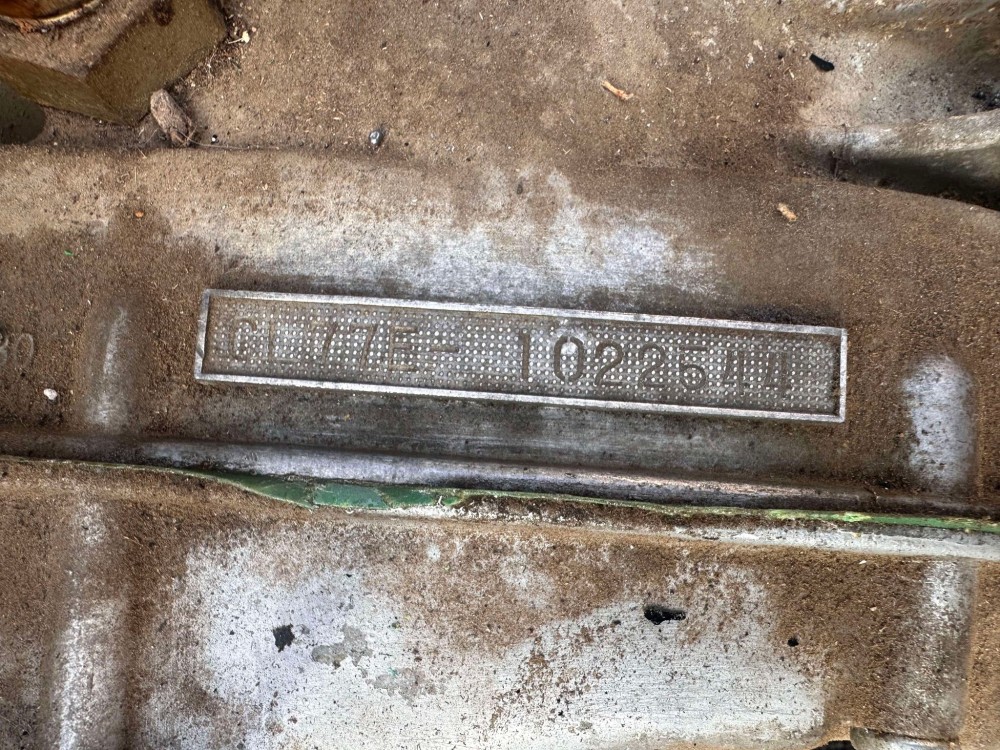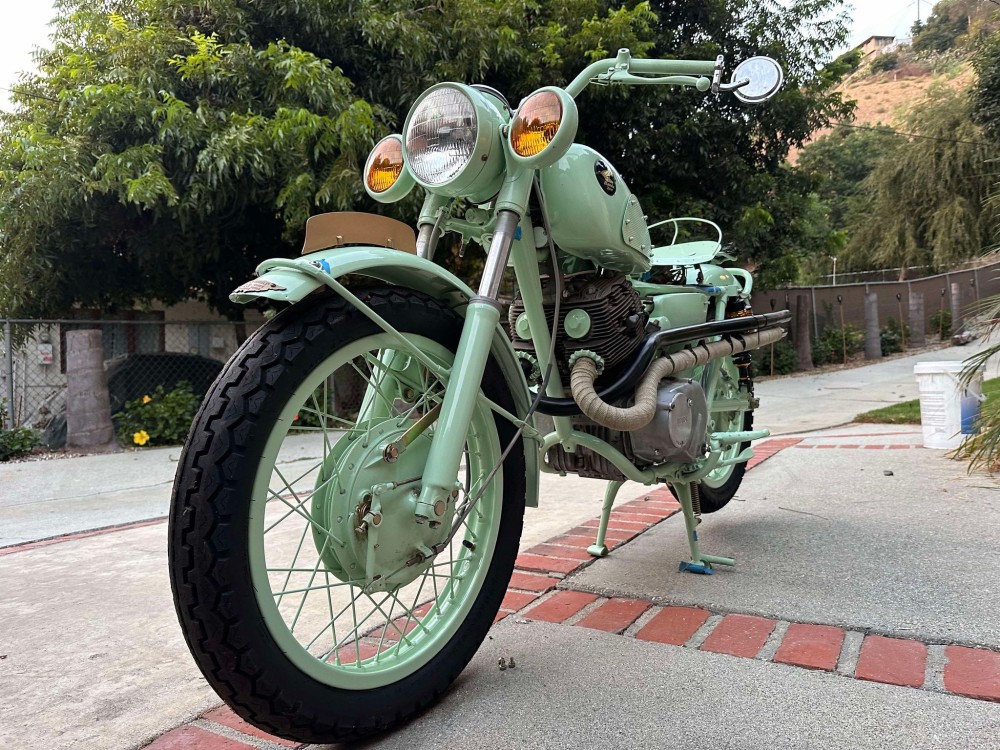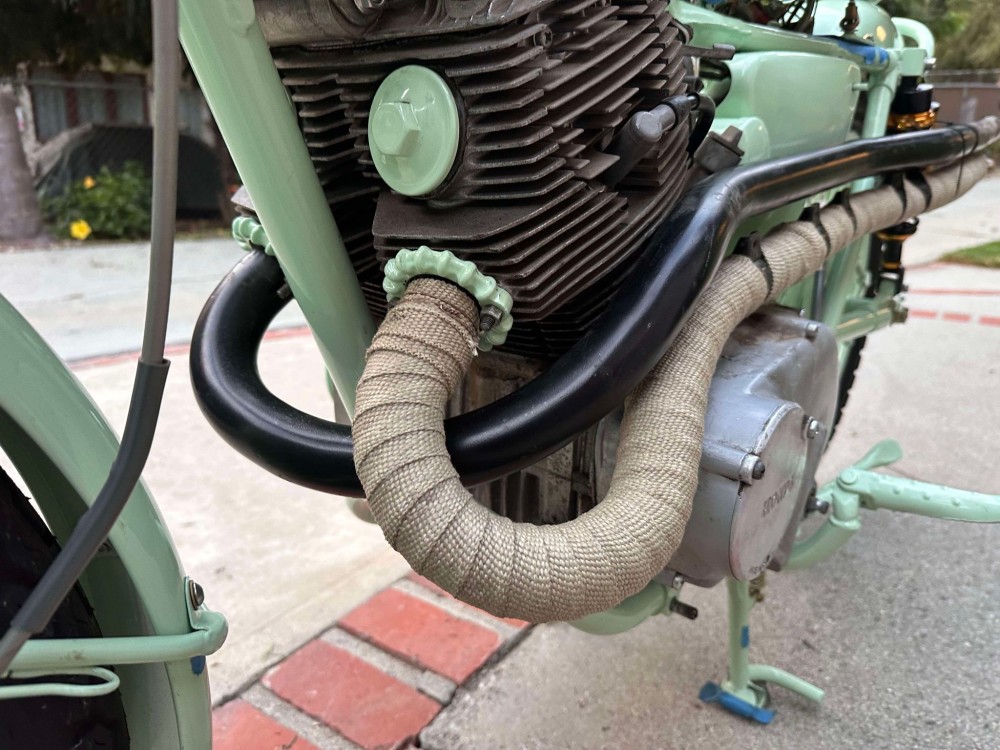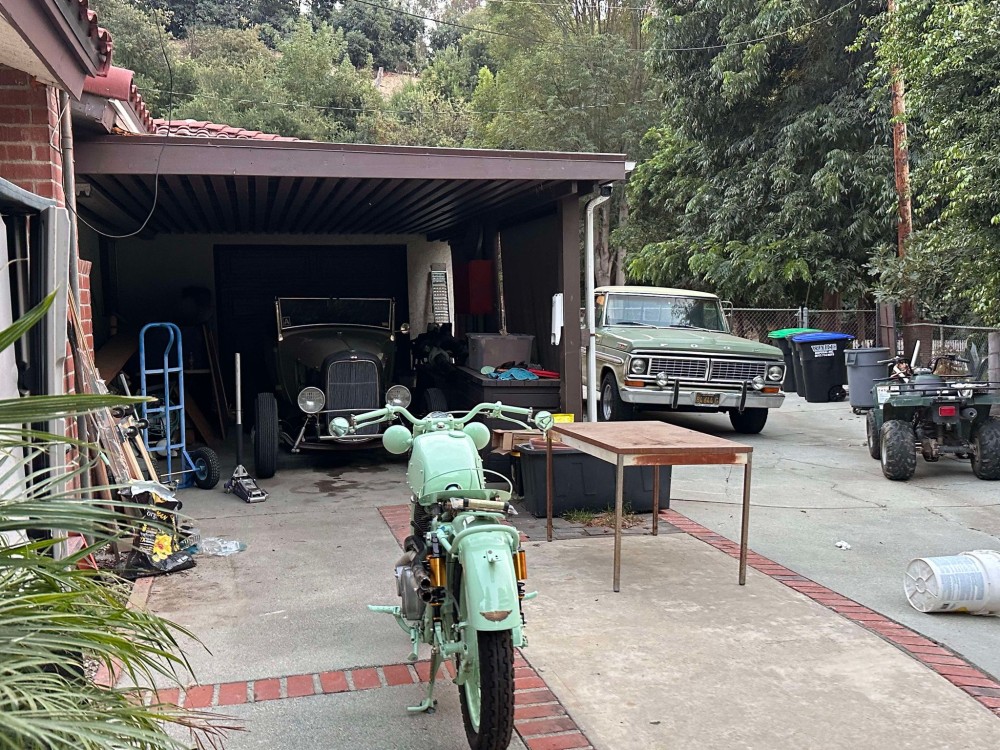For Sale
1966 Honda CL77 Honda 305 FOR SALE only 972 Miles
Here we have the last of Honda’s 305 models, which began with the dry-sump CA76 in 1959, moving on to the wet-sump CA77 Dream in 1960, then the CB77 Super Hawk in ’61, and finally, the model we are dealing with here, the CL77 Honda.
I have had this in bits and pieces and a box of unmarked parts and thought that at least I will fit the motor and see how this old girl looks, I mean, she is now 58 years old and cool to see this in a rolling condition. The motor turns over with lots of compression. The old guy I got it off a while ago now has had it from New and it has had many changes in color, the owner powder coated it this color for some reason but its a cool looking ride that can easily be finished off to whatever you want in your style.
I just have way too many bikes here at the Barn and with 15 more builds to try and complete, I think its time I offer this up to people for a great price of $800 !!!
Thats a great deal and has paper work and license plate etc the brakes work, new tires as well, a fun bike, even to park in a shop or on top of a table, as its a superb focal point.
Have a look and see what you think, I was contemplating just sticking it up on the wall but, I have so many things to do I think its a shame not to let this go and someone can easily finish this as all the parts are there.
I am in Southern California, so you would have to arrange shipping if you are out of state , but you get a lot of bike for that money and the original License plate too with original tags on it, very rare indeed, plus those exhausts are super hard to find these days too.
The motor was a very decent piece of work, the aluminum crankcase split horizontally so the oil contained had no way to leak. When Honda had originally developed the motor in the ’50s, the C75 being on the Japanese market in 1956, it had a dry sump, the oil in its own container, like the English bikes. But that soon changed to the wet-sump concept, requiring less plumbing—always a good idea.
The CL powerplant was very similar to the CB’s. The parallel twin’s 180-degree crankshaft had four bearings, a ball on the left end and three rollers, with needle bearings on the connecting rods. Keep them all lubricated and that crank could happily go 100,000 miles. The cylinder barrels were alloy, using cast iron liners and alloy heads, with two valves per cylinder. None of this pushrod nonsense, as a single overhead camshaft powered by a chain running between the two cylinders did all the work. With an externally adjustable tensioner. A pair of 26mm Keihin carbs, with excellent air cleaners, put the gas in the combustion chambers, to be compressed 9.5 times. Sparks were provided by an ignition system that employed an automatic advance mechanism, coming to full advance at some 3,300 rpm. Spin that baby to 9,000 rpm, and the better part of 28 horsepower could be found at the end of the crankshaft. A single-row primary chain ran the horses to a wet clutch, then through four gears, the main shaft running on pressure-fed ball bearings, and out on the right side to a final chain drive.
The CL frame was quite different from the CB’s. Since the Super Hawk was not expected to go bouncing over rocks and logs it had a tubular backbone frame running from steering head to swingarm pivot, with the engine actually suspended, having a short pair of arms connecting the cylinder heads with the frame. Honda techs, figuring the Scrambler might well get quite a number of hard knocks, created a loop frame, with a single front downtube splitting in two so as to cradle the engine and provide a place for a good skid plate. And also wiping out the electric starter, which had been just in front of the CB’s cylinders, but had to be removed to allow for the downtube. No worries, as it was an easy kick-starter—if the rider used the proper amount of choke.
The Scrambler had a curb weight of 337 pounds and a wheelbase of 52.4 inches. Suspension was average, with a booted telescopic fork at the front, preload-adjustable shock absorbers at the back. Travel was not even 4 inches, so the bounceability was limited. The wheels were 19 inchers, shod with what was then called “universal” tires, which were far happier on the road than struggling in loose terrain. Early models had a small drum brake with a double leading shoe on the front wheel, and equally small single leading shoe on the back. The brakes worked OK, but without the force of the Super Hawk’s, as the engineers seemed a mite concerned with a rider applying a bit too much pressure while on a dirt surface. They were enlarged on the later models.
The 40-tooth sprocket on the rear wheel meant high speed touring was certainly not this model’s forte. The silver-paint gas tank held a little less than 3 gallons, with knee grips; the side covers were color matched. Ivory-painted or chromed fenders showed off the painted frame, the latter in black, blue or red. The early version had a long, skinny, high-up dual-straight-pipe exhaust running out the left side, which could make a hellacious noise; soon the system had a small muffler at the far end.
One magazine called the CL77 a “gentleman’s Classic,” and a gentleman should not be found wallowing in deep mud or struggling in a sandy stretch. Leave the genuinely rough stuff to the ungentlemanly types. This is not to denigrate the bike, which was built not to win races but to appeal both to the sporting types and to those who might be interested in some minor off-pavement excursions. And it worked, selling quite well in the increasingly competitive marketplace.
But after the better part of 10 years with the 305, Honda thought it necessary to move on…with the even better 350 model.
As you can see, I have the Original License Plate and you can see the original tags when he had it in 1976, thats a rare plate for sure.
I also have the original registration paperwork as its still in the documents tube that was affixed to the plate, you can clearly see 1966 model on there.
Very unique to find these days and for 800 clams, that’s a steal for sure.
Also, this is the real mileage too, only ridden locally so no miles at all to be honest.
Engine number below for you to check if you so wish.
You can text or call me on : 714-598-8392 or email me at carpy@crpyscaferacers.com for more info or photos etc.
I’m always glad to help out and answer questions on any of my bikes or parts for that matter, been doing this job for almost 25 years here in Southern California.
A fun machine for somebody for not a lot of money, you could get a lot of money for the exhausts alone.
I shall add a few pictures so that way you get to see what this bike is all about and what you get for your hard earned loot.
Pass the word if you know anybody as with less than 1000 miles, this bike is a rare find and I know somebody will get many many miles of smiles on this set up.
